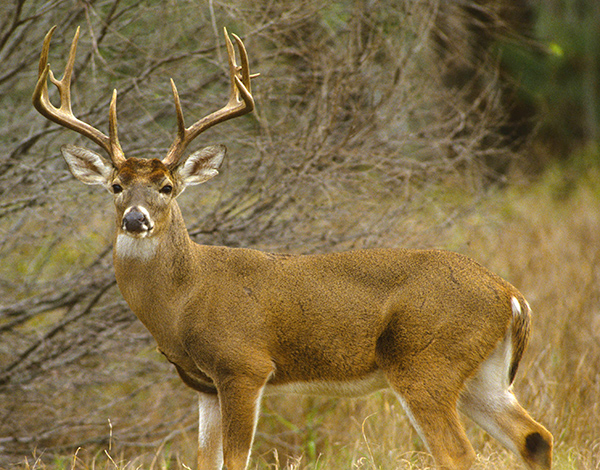By Louie Stout
 Bow Hunting Prospects Looking Good
Bow Hunting Prospects Looking Good
Hunters who have done their homework should have no trouble finding deer when the bow season opens Tuesday.
Wildlife managers from both sides of the state line predict a season as good, if not better, than last year.
Indiana’s statewide archery season runs Oct. 1 through Jan. 5. Firearms season doesn’t open until Nov. 16. Michigan’s first bow season runs until Nov. 14. Its gun season opens Nov. 15.
“It should be another good year for northern Indiana hunters,” said Indiana Deer Biologist Joe Caudell. “You haven’t had the EHD (Epizootic Hemohorragic Disease) breakout that we’ve had in the southern counties, and some of the northern counties are among the best ones in the state for large deer.”
Ken Kesson, wildlife biologist at Crane Pond Game Area in Jones, Mich., also said he expects good numbers of deer in southwest Michigan this fall.
“We’ve seen good recruitment with some does having triplets,” he explained. “Soft fruits are doing well and there are a lot of acorns, so there have been a lot of natural food sources for the deer to eat this summer.”
Good nutrition, he adds, is a key ingredient to growing big, healthy deer.
Hunters who have been scouting deer areas likely have had their eyes on a few dandies. However, says Kesson, early bow hunters must remember that deer patterns are changing.
“The hunters who have been watching deer in the bean and hay fields will find the animals have begun shifting back to natural food sources, like acorns and fruits,” he explained. “Also, the buck groups will begin breaking up and shifting their patterns as well.”
Michigan hunters are reminded that they are no longer allowed to bait deer into their shooting areas. The state has banned baiting for the southern half of Michigan in light of the CWD (Chronic Wasting Disease) breakout in the central part of the state. That ban includes non-hunters who historically have put out feed for deer.
In another change, the state has banned the use of natural deer urine-based lures and scents.
Check the deer hunting guide for any additional regulation changes.
“It’s always good for a hunter to review the regulations before heading into the field,” said Kesson.
Kesson said there are plenty of private land antlerless permits remaining in southwest Michigan for hunters who wish to purchase one. However, most of the public land permits have been claimed.
There are no major changes in Indiana deer hunting regulations. However, all deer hunters are urged to utilize the “Archer’s Index” which is a voluntary deer reporting program. The information hunters provide during the season helps wildlife managers get a better idea of deer herds in each county. You can find the online reporting form at www.in.gov/dnr/fishwild/10189.htm.
Last year was a good year for northern Indiana hunters in Elkhart, Kosciusko, LaPorte, Marshall and St. Joseph counties. Each county saw its harvest number rise over the 2017 hunt.There were 1,200 deer killed in St. Joseph County last year and 445 were bucks. Elkhart hunters took 1,324 deer and 544 were bucks.
Kosciusko County, one of the state’s best, saw 2,039 deer taken with 843 being bucks. In Marshall County it was 1,743 with 800 bucks while LaPorte harvested 1,733 deer including 729 bucks.
All of the aforementioned counties will allow hunters to buy up to two bonus antlerless permits. Last year, St. Joseph, LaPorte and Elkhart offered hunters three bonus licenses.
Statewide, the harvest exceeded 1,000 deer in 54 counties and 2,000 in 11 counties. Antlered deer accounted for at least 50 percent of the total harvest.
Northern Indiana counties that ranked in the top 10 harvest figures were Steuben (4th) and LaGrange (10th).
Rifle hunters accounted for 42.3 percent of the harvest while shotgun hunters took 16.1 percent, bow hunters 14.4 percent and muzzleloaders 14 percent.
Deer license sales have diminished statewide over the past couple of years. Last season there were 300,395 total licenses sold, about 5,000 fewer than the year before and 14,000 fewer than in 2016. Non-resident license sales remained about the same although the number of deer bundle licenses increased slightly.
The deer bundle license ($65) can save the avid hunter cash as it can be used in all seasons and allows the hunter to take up to 3 deer, only one of which can be a buck. Otherwise, the hunter is paying $24 per license.